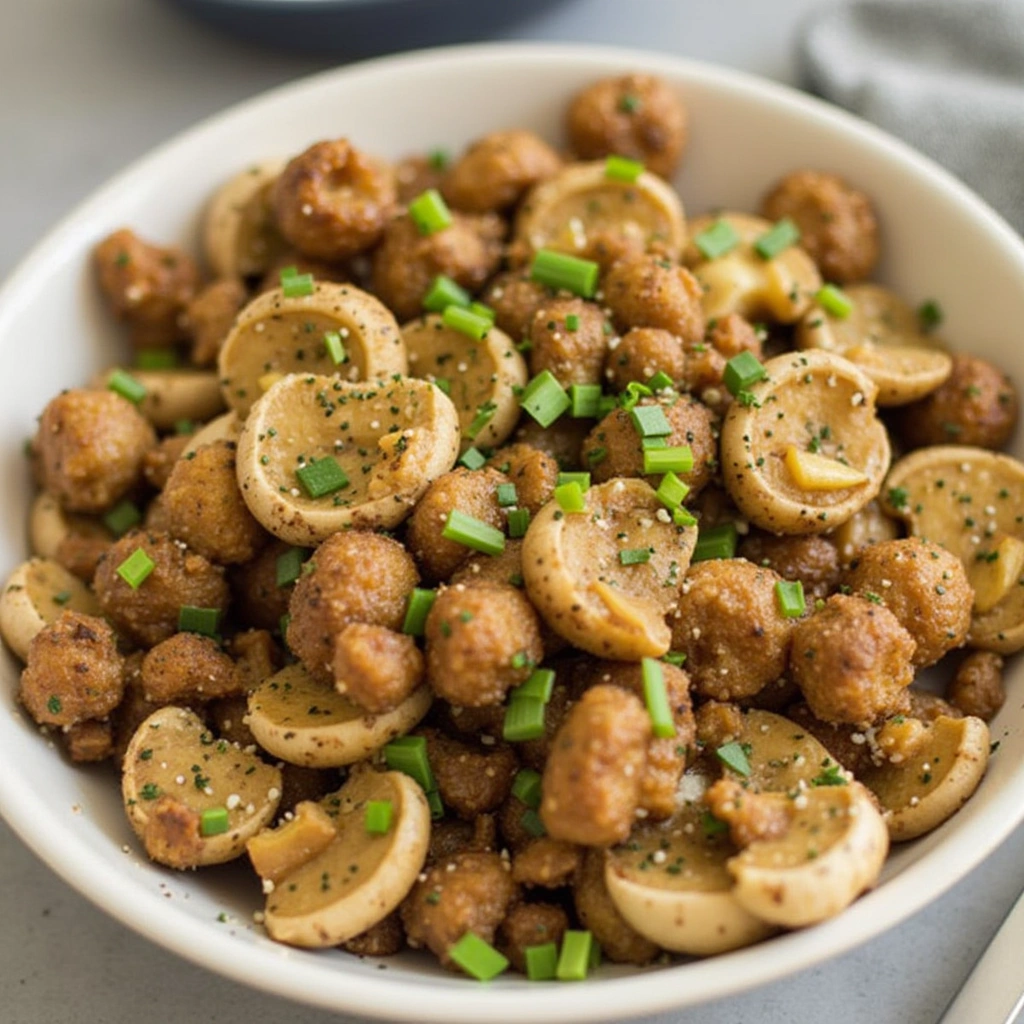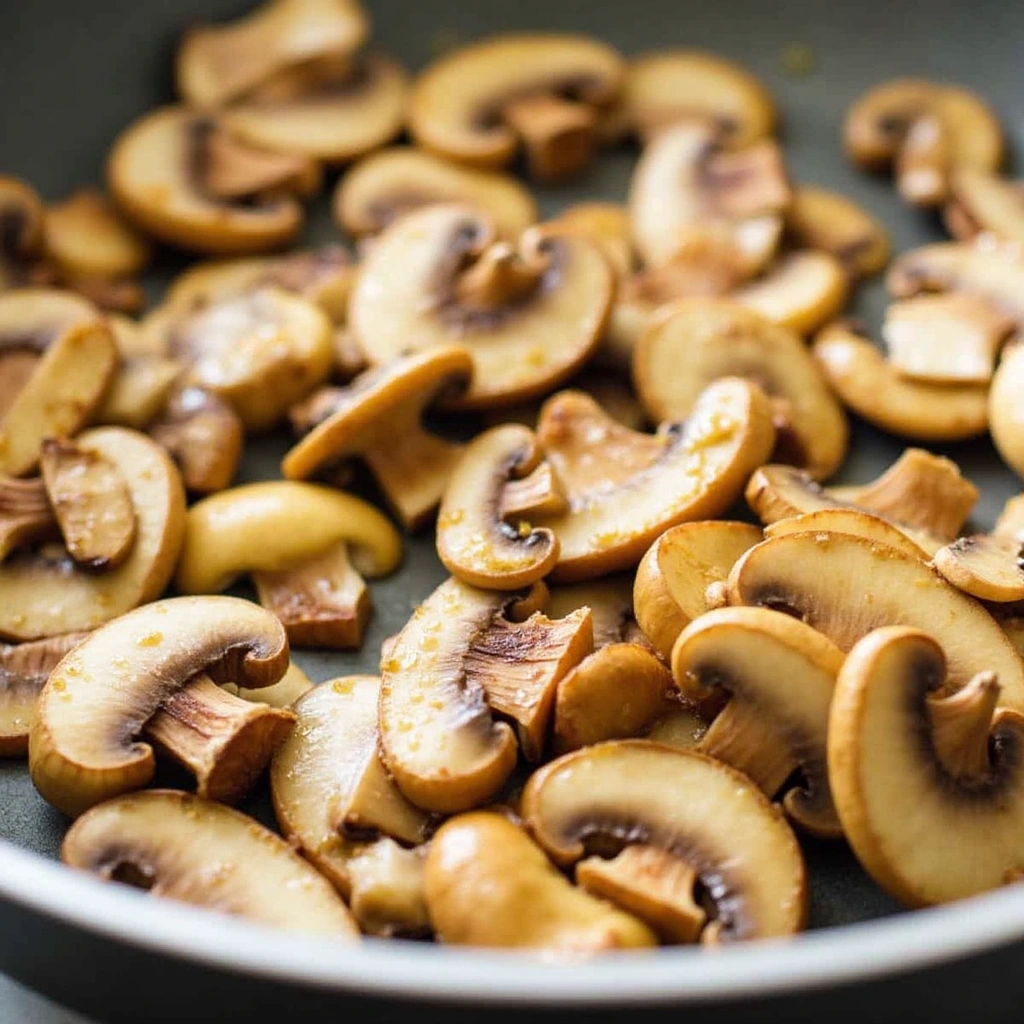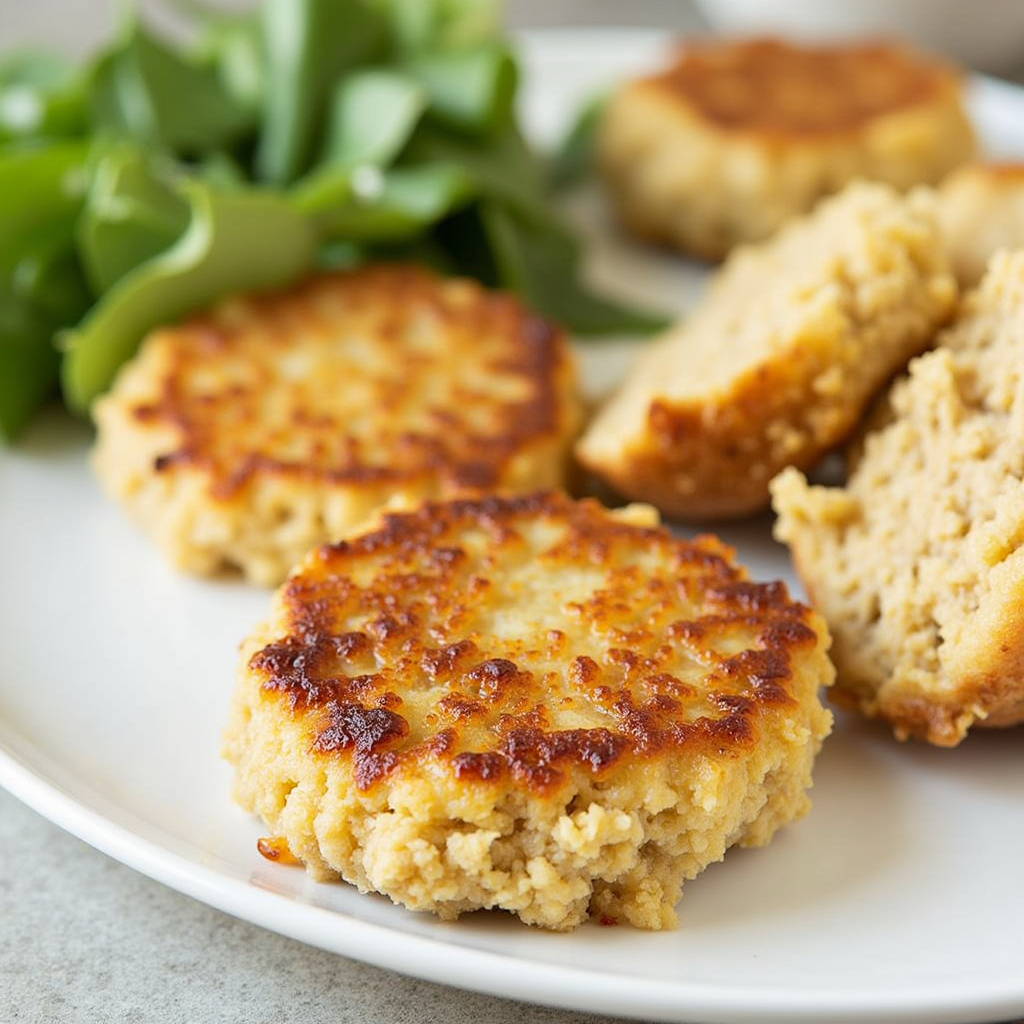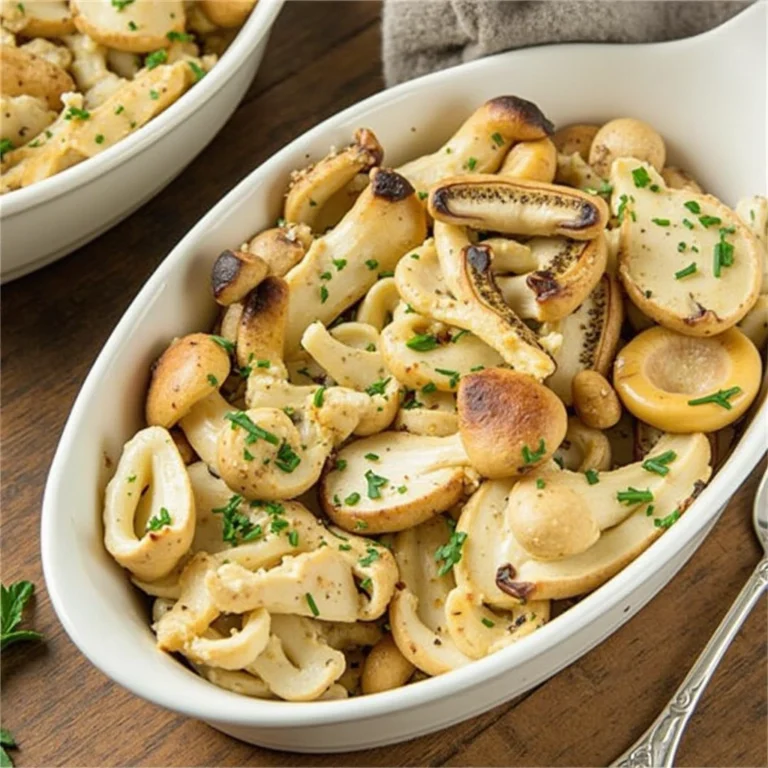Lion’s Mane Mushroom Recipe is a unique culinary delight, cherished for their meaty texture and mild, seafood-like flavor. Often compared to crab or lobster, these mushrooms are not only delicious but also packed with health benefits. This guide will walk you through everything you need to know about Lion’s Mane mushrooms, from their nutritional value to why they’re a fantastic addition to your kitchen repertoire.
What Are Lion’s Mane Mushrooms?
Lion’s Mane mushrooms (Hericium erinaceus) are a type of edible fungi known for their distinctive shaggy, white appearance, which resembles a lion’s mane. They grow on hardwood trees and are found in North America, Europe, and Asia. These mushrooms have been used for centuries in traditional Chinese medicine for their potential health benefits, particularly for brain and nervous system support.
Nutritionally, Lion’s Mane mushrooms are a powerhouse. They are rich in antioxidants, which help combat oxidative stress, and contain compounds like hericenones and erinacines, which may support cognitive health and nerve regeneration. Additionally, they are a good source of protein, fiber, and essential minerals like potassium and zinc.
Why Cook with Lion’s Mane Mushrooms?
Cooking with Lion’s Mane mushrooms is a rewarding experience for both novice and experienced cooks. Here are a few reasons why they deserve a spot in your kitchen:
1. Unique Flavor and Texture
Lion’s Mane mushrooms have a mild, slightly sweet flavor with a seafood-like undertone, making them a versatile ingredient. Their texture is firm and meaty, which makes them an excellent substitute for meat in vegetarian and vegan dishes.
2. Health Benefits
Beyond their delicious taste, Lion’s Mane mushrooms are celebrated for their potential health benefits. They are believed to support brain health, improve digestion, and boost the immune system. Incorporating them into your diet is a tasty way to reap these benefits.
3. Culinary Versatility
These mushrooms can be prepared in a variety of ways, from sautéing and grilling to roasting and frying. They absorb flavors well, making them perfect for marinades, sauces, and seasonings. Whether you’re making a stir-fry, pasta, or a hearty soup, Lion’s Mane mushrooms can elevate your dish.
4. Sustainable and Eco-Friendly
As a plant-based ingredient, Lion’s Mane mushrooms are a sustainable choice for environmentally conscious cooks. They require fewer resources to grow compared to animal-based proteins, making them an eco-friendly addition to your meals.
Tips for Cooking with Lion’s Mane Mushrooms
- Cleaning: Gently brush off any dirt or debris with a soft brush or damp cloth. Avoid soaking them in water, as they can absorb moisture and become soggy.
- Preparation: Slice or tear the mushrooms into bite-sized pieces to maximize their surface area for cooking. This helps them develop a golden, crispy exterior.
- Cooking Methods: Sautéing is one of the most popular methods, as it enhances their natural umami flavor. You can also grill, roast, or even deep-fry them for a crispy texture.
- Pairings: Lion’s Mane mushrooms pair well with garlic, thyme, butter, soy sauce, and white wine. They also complement ingredients like pasta, rice, and leafy greens.
Exploring Flavor Combinations
Lion’s Mane mushrooms are a canvas for creativity in the kitchen. Their mild flavor allows them to blend seamlessly with a variety of ingredients and cuisines. For inspiration, consider pairing them with bold flavors like miso, ginger, or chili, or keep it simple with olive oil, salt, and pepper to let their natural taste shine.
Whether you’re a health enthusiast, a vegan cook, or simply someone looking to try something new, Lion’s Mane mushrooms are a fantastic ingredient to experiment with. Their unique texture, flavor, and nutritional benefits make them a standout addition to any meal.
If you love experimenting with plant-based ingredients, check out our vegan carrot cake cookies recipe for a delightful dessert.

How to Prepare Lion’s Mane Mushrooms
Preparing Lion’s Mane mushrooms is simple, but a few key steps ensure you preserve their unique texture and flavor. Here’s how to get them ready for cooking:
Cleaning
- Avoid soaking Lion’s Mane mushrooms in water, as they can absorb moisture and become soggy. Instead, use a damp cloth or a soft brush to gently remove any dirt or debris.
- Trim any tough or discolored parts from the stem, as these can be less pleasant to eat.
Slicing
- For Grilling or Steaks: Slice the mushrooms thickly (about 1/2 inch) to create hearty, steak-like pieces that hold up well on the grill or in a pan.
- For Stir-Fries or Crab Cakes: Shred the mushrooms into smaller, bite-sized pieces. This works especially well for mimicking the texture of crab or lobster in vegan dishes.
Pro Tips
- Handle the mushrooms gently to avoid breaking their delicate structure.
- Pat them dry with a paper towel after cleaning to ensure they crisp up nicely when cooked.
Proper preparation is key to maintaining the signature flavor and meaty texture of Lion’s Mane mushrooms. Once prepped, they’re ready to be transformed into a variety of delicious dishes!r and texture.
Best Cooking Methods for Lion’s Mane Mushrooms
Lion’s Mane mushrooms are incredibly versatile and can be cooked using various methods to bring out their unique flavor and texture. Here are three popular techniques:
Sautéing
- Heat butter or olive oil in a skillet over medium heat.
- Add sliced mushrooms and cook for 5–7 minutes, stirring occasionally, until golden brown.
- Season with garlic, thyme, rosemary, or your favorite herbs for added flavor.
Grilling
- Marinate thick slices of Lion’s Mane in a mixture of olive oil, soy sauce, and minced garlic for 15–20 minutes.
- Preheat the grill to medium heat and cook the mushrooms for 3–4 minutes per side, until tender and slightly charred.
- This method adds a smoky depth to their natural umami flavor.
Baking
- Coat the mushrooms with breadcrumbs or your favorite seasoning blend.
- Place them on a baking sheet and bake at 375°F (190°C) for 15–20 minutes, flipping halfway through.
- Baking gives the mushrooms a crispy exterior while keeping the inside tender.
Each method highlights the mushroom’s meaty texture and mild, seafood-like flavor, making them a standout ingredient in any dish. Experiment with these techniques to find your favorite!
Love crunchy textures? Pair this with our blackstone chicken recipes for an unforgettable meal.
Lion’s Mane Mushroom Recipes
Classic Sautéed Lion’s Mane Mushrooms
Ingredients:
- 1 lb Lion’s Mane mushrooms, sliced
- 2 tbsp olive oil
- Salt and pepper to taste
Instructions:
- Heat olive oil in a skillet over medium heat.
- Add the sliced mushrooms and cook for 5–7 minutes, stirring occasionally, until golden brown.
- Season with salt and pepper.
Serve as a flavorful side dish or as a topping for steak, pasta, or toast. This simple recipe highlights the mushroom’s natural umami and meaty texture!

2. Vegan Crab Cakes
Ingredients:
- 2 cups shredded lion’s mane mushrooms
- 1/2 cup breadcrumbs
- 1 tbsp vegan mayo
- 1 tsp Old Bay seasoning
Instructions:
- Combine mushrooms, breadcrumbs, mayo, and seasoning.
- Shape into patties and fry until golden brown.
- Serve with salad or dipping sauce.

Creative Uses for Lion’s Mane Mushrooms
- Add to stir-fries for a chewy, satisfying bite.
- Use in tacos for a unique meat alternative.
- Incorporate into soups or risottos for added flavor.
For more creative inspirations, consider our pancake recipe without eggs for a versatile breakfast dish.
Tips for Storing Lion’s Mane Mushrooms
To fully enjoy lion’s mane mushrooms, proper storage is essential. Since they have a soft, sponge-like texture, they require careful handling to prevent spoilage and maintain their unique qualities.
Cooking
One of the most important things to remember when preparing lion’s mane mushrooms is to avoid overcooking them. Overcooking can make them dry and rubbery, diminishing their naturally tender and meaty texture. A light sauté or gentle roasting helps retain their juiciness while bringing out their rich, umami flavor.
Storage
Storing lion’s mane mushrooms correctly ensures they remain fresh for as long as possible. The best way to store fresh mushrooms is in a paper bag in the refrigerator. The paper bag helps absorb excess moisture and allows the mushrooms to breathe, preventing them from becoming slimy. Properly stored, they can last up to five days in the fridge.
If you want to keep lion’s mane mushrooms for an extended period, freezing is an option. However, they should be lightly cooked before freezing, as raw mushrooms can develop an undesirable texture when thawed. Simply sauté them lightly, let them cool, and store them in an airtight container before placing them in the freezer. This method helps preserve their flavor and texture for several months.
FAQs About Lion’s Mane Mushrooms
1. What do lion’s mane mushrooms taste like?
Lion’s mane mushrooms have a mild, slightly sweet, and seafood-like flavor. Many people compare them to crab or lobster due to their tender, meaty texture. This makes them an excellent ingredient for plant-based seafood alternatives.
2. Can I use them in vegan recipes?
Absolutely! Lion’s mane mushrooms are perfect for vegan and vegetarian dishes. Their meaty texture makes them an excellent substitute for seafood or meat in various recipes. They can be used in vegan crab cakes, mushroom “steaks,” tacos, or even stir-fries. Their ability to absorb flavors makes them a fantastic option for plant-based cooking.
3. How do I prevent them from becoming soggy?
Since lion’s mane mushrooms have a sponge-like structure, they can easily absorb too much liquid, making them soggy. To prevent this:
- Avoid soaking them in water when cleaning. Instead, use a damp cloth or soft brush to remove dirt.
- Cook them with minimal oil or butter to maintain their firm, meaty texture.
- Use high heat and avoid overcrowding the pan to allow proper browning and moisture evaporation.
Conclusion
Lion’s mane mushrooms are a fantastic addition to any kitchen, offering a unique taste and nutritional benefits. By storing them properly and cooking them with care, you can enjoy their rich flavor and satisfying texture in a variety of dishes. Whether you’re using them as a meat substitute or simply exploring new culinary options, lion’s mane mushrooms are a versatile ingredient that deserves a place in your diet.

